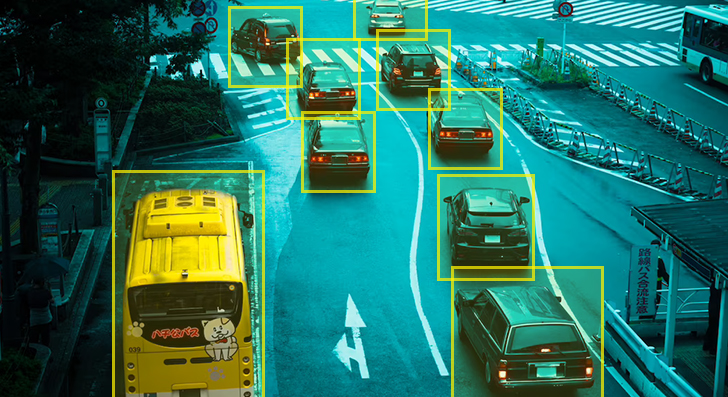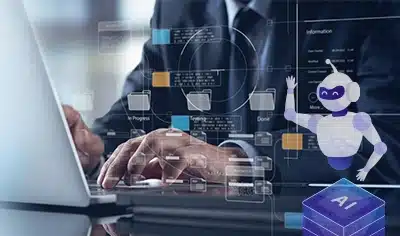Data is the powerhouse that drives innovation in the realm of Artificial Intelligence and Machine Learning. Organizations often struggle to analyze overwhelming amounts of raw, unstructured data as they leverage AI-powered automation. Hence, labeled data becomes necessary to develop successful models that can make correct predictions, identify patterns, and uncover correlations.
Machine Learning and Deep Learning models learn from previously annotated image and video datasets to label or classify segments of fresh images and videos independently. Most importantly, these algorithms are only as effective as their training data—annotated data is the foundation AI/ML models are built on.

Sectors like healthcare, automotive, and e-commerce are some of the examples where trends in the image annotation industry have become essential to progress. For example, medical images in the healthcare industry need to be labeled as blood vessels, tumor boundaries, or regions of interest for accurate diagnosis of the ailment, based on which doctors provide treatment. Properly tagged data helps improve product recommendations and search engines for customers in the eCommerce industry. The automotive industry uses labeled datasets for the development of self-driving cars.
Unveiling the Future: Exploring AI Image Annotation Trends and Innovations
The field of image annotation is continuously evolving, driven by advancements in Artificial Intelligence and Machine Learning techniques. If your business leverages AI for data processing product tagging, facial recognition, or character animation, you’d definitely want to keep up with the new possibilities in the image annotation services industry to ensure you remain on top of the competition. That said, here are some emerging trends and innovations shaping the future of image annotation:
Trend 1: Leveraging the Power of Automation
With the growing demand for annotated datasets, image annotation outsourcing companies are turning to automation to scale their labeling operations. Machine Learning algorithms are trained to recognize patterns independently and provide accurate labels in real-time. Automating such time-consuming but important processes can significantly minimize the need for time and resources spent on manual annotation. Thus, businesses can process more data in a short span and with greater accuracy.
Trend 2: Real-time Annotation
A rapidly emerging field, real-time data annotation is used in applications like autonomous vehicles and robotics. Continuous streams of data allow such models to make safe and accurate decisions effectively in real-world scenarios. They can function efficiently with the help of continuous labeling of the data in real-time.
Trend 3: Multi-modal Data Annotation
Image annotation is no longer limited to visual data alone. With the rise of multi-modal learning, businesses are incorporating other modalities, such as text, audio, and sensor data, into their annotation pipelines. Multi-modal annotation enables a more comprehensive understanding of the content, context, and semantics of images, leading to improved performance in various applications like image captioning, sentiment analysis, and image retrieval. This is helpful for applications that require the integration of multiple data sources like Image Recognition and Natural Language Processing.
Trend 4: Transfer Learning
Transfer learning is a technique that allows AI/ML models trained on one dataset to be reutilized for similar tasks or domains, eliminating the need for substantial manual annotation. This approach significantly reduces the amount of labeled data required to train an image annotation model while boosting annotation accuracy, making it more feasible and cost-effective for businesses. By transferring knowledge from existing models, companies can quickly adapt and customize image annotation solutions for their specific needs.
Drive Innovation and Insight from Visual Data with Advanced Image Annotation Services
Trend 5: Synthetic Data Generation
An immense volume of miscellaneous data is one of the important prerequisites of training Machine Learning models. This highlights the importance of synthetic data generation. As a rapidly growing sector, AI algorithms are used to generate new data for training Machine Learning models. This process can substantially minimize the time and cost of manual annotation while providing vast amounts of high-quality data just in time.
Privacy and Ethical Considerations
As image annotation technologies become more pervasive, businesses should address privacy concerns and ethical considerations. Annotating sensitive or personally identifiable information (PII) in images requires strict compliance with data protection measures and privacy regulations. To prevent unintended biases in annotation and protect user privacy, companies should establish robust data governance practices and implement anonymization techniques.
Final Words
The future of image annotation is driven by advancements in Artificial Intelligence and Machine Learning techniques, efficient data management via automation of processes, and synthetic data generation. These innovations offer businesses better accuracy, scalability, and cost-effectiveness in leveraging image data for various applications, opening up new possibilities and limitless opportunities across diverse industries and verticals.





